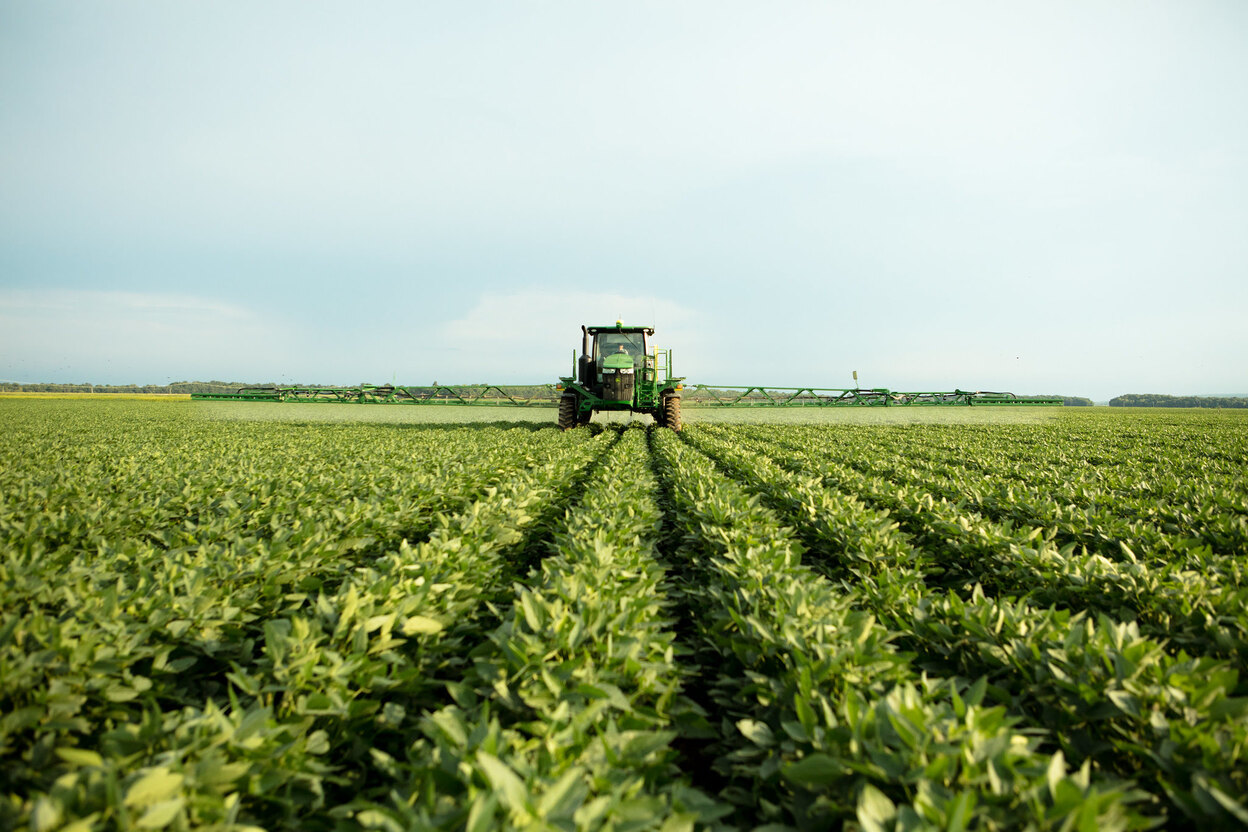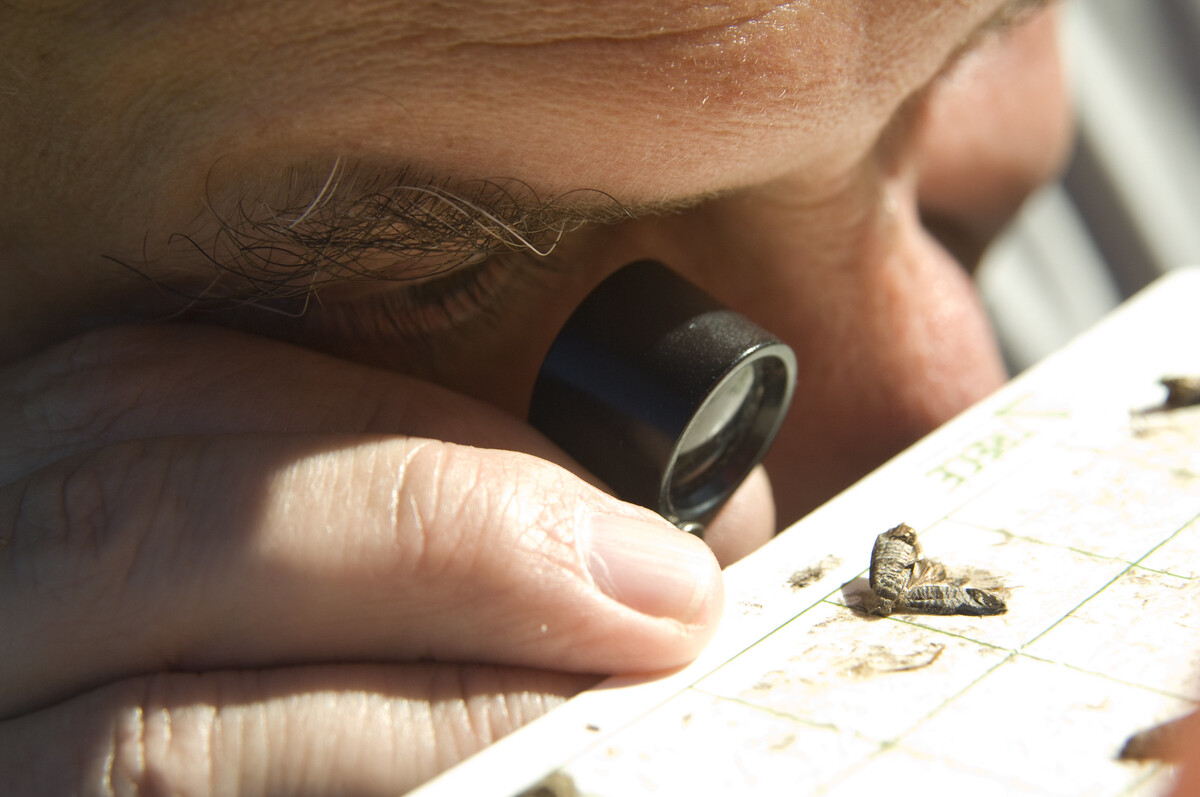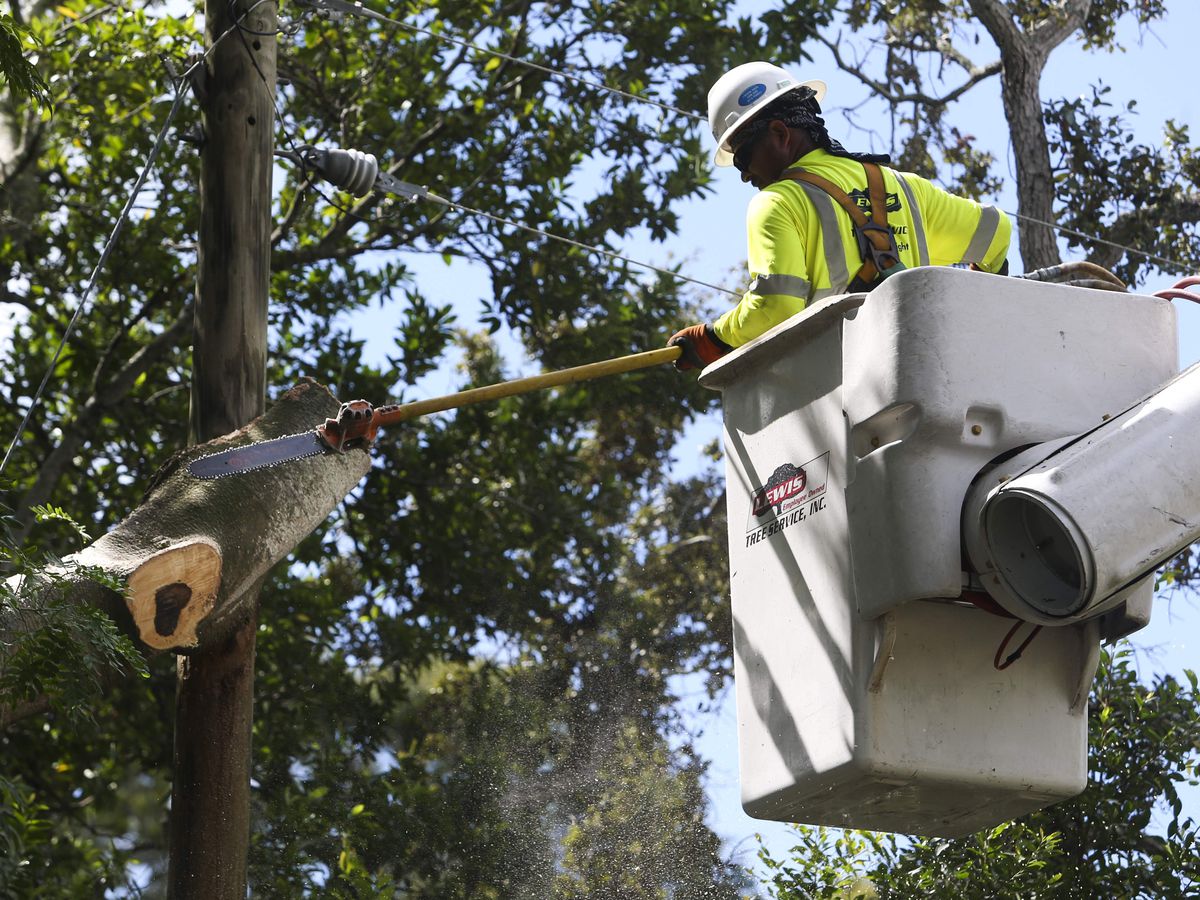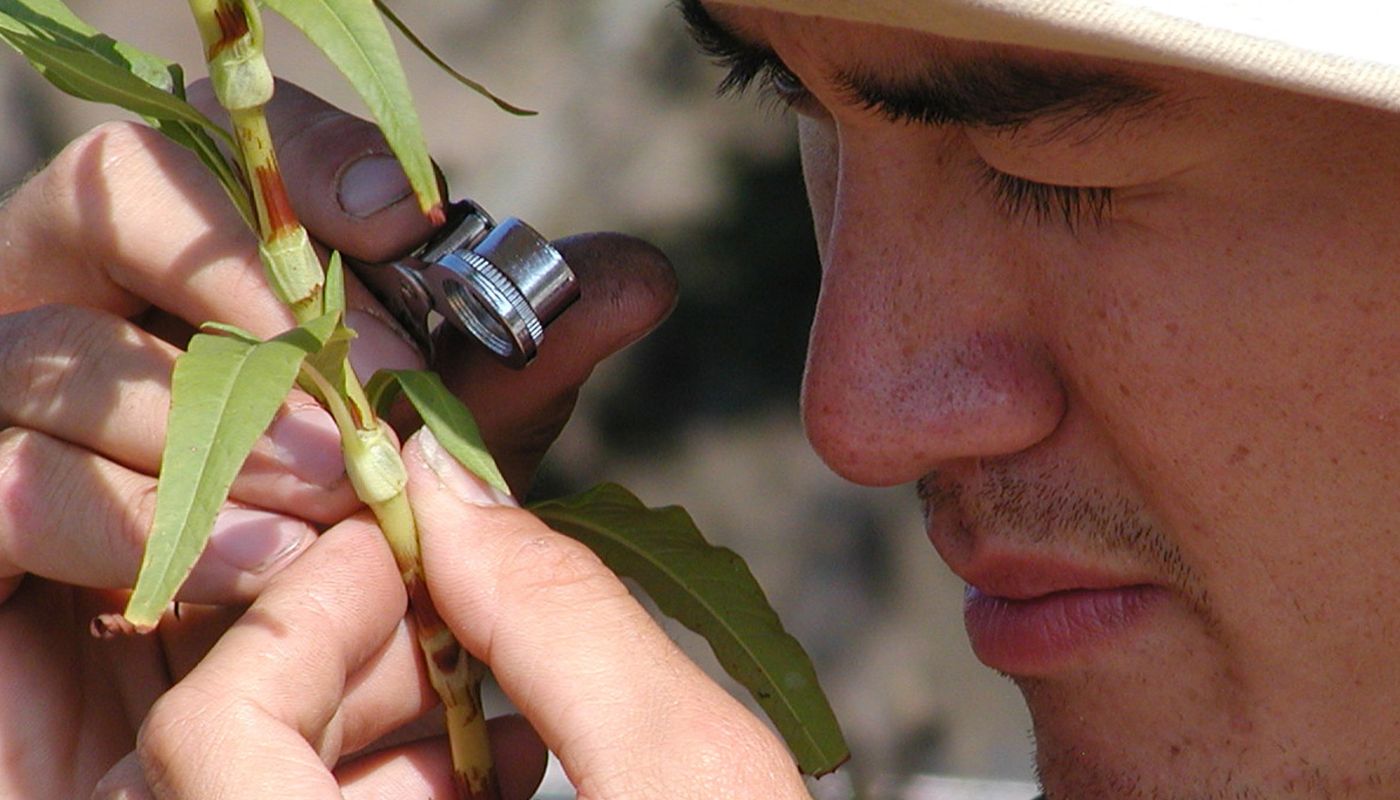Home>Gardening News and Trends>Latest News>Someone Who Studies Trees


Latest News
Someone Who Studies Trees
Modified: January 22, 2024
Stay updated with all the latest news about someone who studies trees. Get insights, articles, and updates on the field of tree studies. Don't miss out!
(Many of the links in this article redirect to a specific reviewed product. Your purchase of these products through affiliate links helps to generate commission for Chicagolandgardening.com, at no extra cost. Learn more)
Table of Contents
- Introduction
- Background on Trees
- Importance of Studying Trees
- Education and Training for Tree Studies
- Techniques and Tools Used in Tree Studies
- Fieldwork and Data Collection
- Tree Species Identification
- Understanding Tree Anatomy and Physiology
- Tree Growth and Development
- Tree Conservation and Management
- The Role of Tree Studies in Environmental Science
- Career Opportunities in Tree Studies
- Conclusion
Introduction
Welcome to the fascinating world of tree studies. Trees are not just beautiful elements of our natural environment; they also play a crucial role in our ecosystem’s health and overall well-being. Understanding and studying trees can provide us with valuable insights into the complexities of nature and help us make informed decisions for conservation and management.
Tree studies, also known as dendrology or arboriculture, involve the systematic examination, analysis, and research of trees. This field encompasses various aspects, including tree species identification, tree anatomy and physiology, tree growth and development, and tree conservation and management.
So why is studying trees so important? Trees are essential for maintaining the balance of our ecosystem. They provide us with oxygen, regulate temperatures, filter air and water, and provide habitats for countless species. By studying trees, we can gain a deeper understanding of their ecological role, the interactions they have with other organisms, and the impact of environmental factors on their health and growth.
Furthermore, tree studies contribute to our knowledge of climate change and environmental science. Trees can act as valuable indicators of climate patterns and serve as archives of climatic data through their growth rings. By analyzing tree rings, scientists can reconstruct past climate conditions and gain insights into long-term climate trends, which can be used to predict future changes.
Studying trees requires a combination of education, practical fieldwork, and the use of specialized techniques and tools. Arborists, dendrologists, and forest ecologists are just some of the professionals who dedicate their careers to understanding trees and their ecological significance.
In this article, we will delve into the various aspects of tree studies, including the education and training required, the techniques and tools used, and the career opportunities available in this field. Whether you have a passion for nature, a love for trees, or are considering a career in environmental science, this article will provide you with a comprehensive overview of the world of tree studies.
Background on Trees
Trees have been a vital part of our planet for millions of years. They belong to the plant kingdom and are characterized by their woody stems, branches, and extensive root systems. Trees come in various shapes and sizes, ranging from towering giants like the redwoods to smaller species found in dense forests.
These remarkable organisms perform several essential functions in our ecosystems. Through the process of photosynthesis, trees convert carbon dioxide into oxygen, helping to purify the air we breathe. They also provide shade, reducing the amount of heat absorbed by the Earth’s surface and mitigating the effects of urban heat islands.
Moreover, trees play a vital role in water regulation. Their roots act as natural filters, preventing soil erosion and promoting water infiltration. Additionally, trees absorb and store water, which reduces the risk of flooding and helps maintain a steady water supply for both humans and wildlife.
Trees are not only crucial for the environment but also hold cultural and economic significance. They have been revered as symbols of strength, wisdom, and longevity in various cultures around the world. Trees also provide valuable resources such as timber, fruits, nuts, and medicinal products, contributing to the economy and providing sustenance for many communities.
Understanding the different types of trees and their characteristics is fundamental for tree studies. There are thousands of tree species found globally, each with unique adaptations and specialized roles within their respective ecosystems. Some common types of trees include conifers (such as pine, spruce, and fir), deciduous trees (like oak, maple, and birch), and tropical trees (such as palm and mahogany).
Tree studies involve an in-depth exploration of these species, encompassing aspects such as tree habit and form, leaf structure, bark texture, and reproductive strategies. By examining these characteristics, researchers can classify and identify different tree species, developing comprehensive databases and guides that assist in accurate tree identification.
Furthermore, understanding the ecological preferences of different tree species is crucial for reforestation efforts, urban planning, and habitat restoration projects. Some trees thrive in specific soil and climatic conditions, while others have higher tolerance for pollution or drought. This knowledge helps in selecting the appropriate tree species for specific environments and maximizing their benefits.
In the next sections, we will delve into the importance of studying trees and the various techniques, tools, and skills required in tree studies.
Importance of Studying Trees
The study of trees is of paramount importance for several reasons. From environmental conservation to sustainable resource management, studying trees provides valuable insights that have far-reaching implications for our planet and its inhabitants.
One of the key reasons for studying trees is their role in maintaining biodiversity. Trees provide habitats for a diverse array of species, including birds, insects, mammals, and microorganisms. By understanding the relationship between tree species and their associated flora and fauna, scientists can identify key biodiversity hotspots and implement conservation strategies to protect these critical ecosystems.
Another vital aspect of tree studies is their contribution to climate change research. Trees play a crucial role in the global carbon cycle by sequestering and storing carbon dioxide through photosynthesis. As the largest terrestrial carbon sinks, trees help offset the impact of greenhouse gas emissions from human activities. By studying tree growth patterns, carbon dynamics, and responses to climate change, scientists can better understand the role of forests in mitigating climate change and develop effective strategies for carbon sequestration.
Furthermore, tree studies offer insights into the health and well-being of urban environments. Urban trees provide numerous benefits, such as improving air quality, reducing noise pollution, and mitigating the heat island effect. By studying urban tree populations and their interactions with the built environment, researchers can inform urban planning decisions and help create greener, more sustainable cities.
Tree studies also inform the management of forest resources. By understanding the growth patterns, reproductive strategies, and ecological preferences of different tree species, forest managers can make informed decisions regarding sustainable logging, reforestation, and forest conservation. This ensures the long-term viability of forest ecosystems and supports the livelihoods of communities dependent on forest resources.
Moreover, studying trees can contribute to our understanding of natural disasters and their impacts. Some tree species, like mangroves and coastal pines, play a crucial role in coastal protection and can help mitigate the impact of storms and flooding. By studying these natural defenses, scientists can develop strategies to enhance resilience in vulnerable areas and protect human lives and infrastructure.
Overall, the study of trees is vital for maintaining ecosystem balance, understanding climate change, promoting sustainable land use practices, and improving overall environmental and human well-being. By delving into the intricacies of trees and their interactions with the environment, researchers can develop evidence-based strategies for conservation, restoration, and sustainable resource management.
Education and Training for Tree Studies
To embark on a career in tree studies, individuals typically pursue educational programs that provide a solid foundation in natural sciences and specialized knowledge in arboriculture, dendrology, or related fields. While formal education is not always mandatory, it greatly enhances job prospects and opportunities for advancement in the field.
Many colleges and universities offer undergraduate and graduate programs in forestry, environmental science, or biology with a focus on tree studies. These programs provide students with a comprehensive understanding of tree biology, ecology, identification, and management. Coursework often includes subjects such as botany, forest ecology, forest management, plant physiology, and dendrochronology.
In addition to classroom learning, hands-on field experiences are crucial components of tree studies education. Field courses and internships provide students with practical skills in tree identification, data collection, and forest inventory techniques. These opportunities allow aspiring tree scientists to apply their knowledge in real-world settings and gain valuable experience in fieldwork.
For individuals interested in specialized knowledge in arboriculture, there are additional certification programs and vocational training options available. These programs focus on tree care, tree health assessment, tree climbing techniques, and equipment operation. Certification programs in arboriculture, such as those offered by the International Society of Arboriculture (ISA), validate the skills and knowledge of tree care professionals and are highly regarded in the industry.
Continuing education and professional development are also essential in tree studies. Ongoing research and advancements in tree science require professionals to stay updated on the latest techniques, technologies, and best practices. Attending conferences, workshops, and seminars allows tree scientists and arborists to network with peers, gain new insights, and expand their skill sets.
Hands-on training with specialized tools and equipment is an integral part of tree studies. Arborists and researchers utilize tools such as increment borers for tree coring, tree climbing equipment for canopy access, tree risk assessment tools, and advanced imaging techniques for non-invasive tree health assessment. Knowledge of these tools and their proper use is essential for accurate data collection and analysis.
Ultimately, a combination of formal education, practical experience, and ongoing professional development prepares individuals for successful careers in tree studies. Whether in the public or private sector, opportunities exist in governmental agencies, environmental consulting firms, research institutions, non-profit organizations, tree care companies, and educational institutions.
In the following sections, we will explore the various techniques and tools used in tree studies, as well as the practical aspects of fieldwork and data collection.
Techniques and Tools Used in Tree Studies
Tree studies utilize a range of techniques and tools to gather data and extract valuable insights about trees and their ecosystems. These methods enable researchers, arborists, and forest managers to assess tree health, measure growth rates, assess environmental impacts, and make informed decisions regarding tree conservation and management.
One of the fundamental techniques used in tree studies is tree coring. Researchers use an instrument called an increment borer to extract a small cylindrical sample from the trunk of a tree. This sample contains the growth rings of the tree, which can provide valuable information about the age, growth rate, and past environmental conditions of the tree.
Remote sensing technologies such as LiDAR (Light Detection and Ranging) and aerial imagery have revolutionized tree studies. LiDAR uses laser pulses to measure the distance between the sensor and the tree canopy, creating highly detailed 3D maps of forested areas. These maps can be used to assess tree height, canopy structure, and biomass. Aerial imagery, obtained using drones or satellites, provides high-resolution images that aid in tree species identification, forest health assessment, and monitoring of forest disturbances.
Another commonly used technique in tree studies is tree or forest inventory. This involves collecting data on individual trees or forest stands, including tree height, diameter at breast height (DBH), crown size, and species composition. This information helps estimate biomass, carbon stocks, and growth rates, and can guide forest management decisions for sustainable resource utilization and conservation.
Tree surveys and monitoring often rely on field data collection techniques. These can involve transect sampling, where researchers measure and record tree characteristics along predetermined paths or lines. Point sampling, on the other hand, involves randomly selecting points within the study area and assessing the trees within a specified radius of each point. These data collection methods provide valuable information on tree density, distribution, and diversity within a given area.
Tree health assessment is a critical aspect of tree studies. Arborists and researchers use various tools and techniques to evaluate the health and condition of trees. These include visual inspections to identify signs of disease, decay, or pest infestation, as well as advanced technologies such as resistograph or sonic tomography for non-invasive assessment of internal decay or structural integrity.
Advancements in genetic analysis have also contributed to tree studies. DNA sequencing and molecular techniques allow researchers to investigate genetic diversity, relatedness among individuals, and population dynamics. This information helps in understanding evolutionary processes, identifying unique genetic traits, and developing conservation strategies for endangered or rare tree species.
The tools used in tree studies range from basic hand tools like calipers and measuring tapes to more advanced equipment like GPS devices for accurate geolocation and data recording. Climbing gear, including ropes and harnesses, is also utilized for accessing and studying trees at different heights.
In summary, the techniques and tools used in tree studies enable scientists and arborists to gather precise data, monitor tree health, analyze growth patterns, and make informed decisions regarding tree conservation and management. By combining the latest technologies with traditional field methods, researchers can delve deeper into the intricate world of trees and contribute to their preservation for future generations.
Fieldwork and Data Collection
Fieldwork is a crucial component of tree studies, as it allows researchers to gather firsthand observations and collect data in the natural environment. This hands-on approach provides valuable insights into tree ecology, growth patterns, and interactions with their surroundings.
Fieldwork in tree studies involves various activities, such as tree surveys, data collection, and environmental assessments. Researchers and arborists spend time in forests, urban areas, and other natural settings to study trees at different scales, from individual trees to entire ecosystems.
Tree surveys are typically conducted to assess tree populations within a specific area. Researchers walk through designated transects or randomly selected plots, recording information about tree species, size, health, and other relevant characteristics. These surveys help in estimating tree density, species composition, and overall biodiversity within a given area.
Data collection during fieldwork often involves accurate measurement and documentation of tree characteristics. This includes measuring tree height, diameter at breast height (DBH), crown size, and other parameters. Specialized instruments like tree calipers, clinometers, and measuring tapes are used to ensure precise and consistent measurements.
Tree coring is another essential data collection method. By extracting small samples from tree trunks using increment borers, researchers can determine the age, growth rate, and historical environmental conditions of individual trees. These samples provide valuable information about the long-term growth patterns and health of tree populations.
During fieldwork, researchers may also conduct experiments or collect additional data related to tree physiology, such as leaf area measurements, bark texture assessments, or sap flow measurements. These measurements provide insights into tree water and nutrient uptake, photosynthetic efficiency, and overall health.
Assessing the impact of environmental factors on trees is an important aspect of fieldwork. Researchers analyze soil characteristics, topography, light availability, and other environmental parameters to understand how these factors influence tree growth and distribution. They may also collect soil or leaf samples for laboratory testing to assess nutrient levels, pH, or disease presence.
Fieldwork can be physically demanding as it often involves traversing challenging terrain, climbing trees, or working in extreme weather conditions. It requires a keen eye for detail, patience, and careful data record-keeping. Safety precautions, such as wearing appropriate personal protective equipment and being aware of potential hazards, are essential during fieldwork.
Technological advancements have also enhanced fieldwork in tree studies. Global Positioning System (GPS) devices enable precise location tagging, mapping, and navigation in different terrains. Mobile devices and data collection apps facilitate efficient data entry, minimizing the need for manual paperwork.
Ultimately, fieldwork and data collection provide the foundation for further analysis and interpretation in tree studies. The data gathered during fieldwork serves as inputs for ecological modeling, forest management plans, and conservation strategies. It allows researchers and arborists to make informed decisions and recommendations based on real-world observations and empirical evidence.
In the following sections, we will explore tree species identification, tree anatomy and physiology, as well as tree growth and development in the context of tree studies.
Tree Species Identification
Accurate tree species identification is a fundamental component of tree studies and plays a crucial role in understanding the diversity and ecological functions of forests and tree populations. Tree species identification involves recognizing and distinguishing the unique characteristics of different tree species based on their physical attributes.
Identification techniques vary depending on the specific characteristics of the trees being studied. Here are some common methods used in tree species identification:
Leaf Morphology: Leaves are often one of the primary features used to identify tree species. Researchers examine the shape, size, arrangement, margin, and venation patterns of leaves. They also observe other leaf characteristics such as color, texture, and the presence of specific structures like hairs or glands. Some trees display distinct leaf shapes, such as the lobed leaves of oaks or the needle-like leaves of pines, which facilitate their identification.
Bark Texture and Color: The texture and color of a tree’s bark can be useful in identifying tree species. The bark of some trees is smooth, while others have deep furrows or ridges. The color of the bark can vary from pale gray or white to dark brown or black. Combining these characteristics helps distinguish between tree species with similar leaf traits.
Twig and Bud Characteristics: Examining twigs and buds can provide valuable clues for tree species identification. Researchers take note of the twig color, texture, and presence or absence of hairs or thorns. Bud characteristics, such as size, shape, color, and position on the twig, can also differentiate between tree species.
Flowers and Fruits: In some cases, the presence of flowers or fruits can help identify tree species. Flower characteristics, such as color, shape, size, and arrangement, can provide useful information. Similarly, the shape, color, size, and texture of fruits or seeds can aid in species identification. However, it is important to note that not all trees produce flowers or fruits at all times, so relying solely on these characteristics may not be sufficient.
Tree Habit and Form: The overall habit and form of a tree can be distinctive for certain species. Some trees have a characteristic growth habit, such as the umbrella-shaped canopy of a maple tree or the columnar shape of a pine tree. The branching pattern and overall architecture of a tree can also provide clues for identification.
Field Guides and Identification Keys: Field guides and identification keys are valuable resources for tree species identification. These references provide detailed descriptions, illustrations, and photographs of various tree species, along with step-by-step identification procedures. Professional arborists, dendrologists, and botanists often rely on these references to confirm their species identification.
It is important to note that tree species identification can be challenging, especially when dealing with closely related species or natural variations within a species. For accurate identification, a combination of multiple characteristics and thorough observation is typically necessary. When in doubt, consulting experts or collaborating with other professionals in tree studies can help refine species identification.
Tree species identification is the starting point for many aspects of tree studies, including ecological research, forest management, and conservation efforts. Accurate identification allows researchers and arborists to understand species distributions, ecosystem functions, and ecological interactions. It also aids in the selection of appropriate tree species for reforestation projects, urban greening initiatives, and habitat restoration.
In the next sections, we will explore tree anatomy and physiology, as well as tree growth and development, in the context of tree studies.
Understanding Tree Anatomy and Physiology
Tree anatomy and physiology delve into the inner workings of trees, exploring their structure, function, and the processes that enable them to survive and thrive in their environments. Understanding tree anatomy and physiology is essential for tree studies as it provides insights into how trees grow, exchange materials, and respond to their surroundings.
Tree anatomy refers to the study of the internal and external structure of trees. By examining the different parts of a tree, researchers can gain a deeper understanding of its form and function.
The major components of tree anatomy include:
- Root System: The root system of a tree provides anchorage, absorbs water and nutrients from the soil, and stores reserves. It consists of large structural roots that branch into smaller feeder roots, which have tiny root hairs that maximize nutrient absorption.
- Trunk: The trunk serves as the main support structure for the tree, providing mechanical strength and conducting water, nutrients, and sugars between the roots and leaves. It is composed of multiple layers, including the bark, phloem, cambium, xylem, and pith.
- Branches: Branches extend from the trunk and support the canopy of leaves. They transport water, nutrients, and sugars to and from the trunk, and provide sites for leaf attachment and flower or fruit production.
- Leaves: Leaves are crucial for photosynthesis, the process by which trees convert sunlight into energy-rich sugars. They have a complex internal structure, including the upper and lower epidermis, mesophyll cells, veins, and stomata, which facilitate gas exchange and water movement.
Tree physiology focuses on the internal processes and functions that occur within trees. It encompasses the study of water transport, nutrient uptake and distribution, energy production, and growth.
Some key aspects of tree physiology include:
- Water Transport: Trees have a complex system of vessels and cells that transport water from the roots to the leaves. This process, known as transpiration, involves the movement of water molecules through the xylem. It is driven by a combination of root pressure, capillary action, and evaporation.
- Nutrient Absorption and Distribution: Trees depend on their root systems to absorb essential nutrients from the soil. These nutrients, including nitrogen, phosphorus, and potassium, are transported along with water through the xylem and phloem, ensuring their distribution to the different parts of the tree.
- Photosynthesis: The leaves of trees play a critical role in photosynthesis. They capture sunlight and convert it into chemical energy through a complex process that involves chlorophyll, carbon dioxide uptake, and the production of sugars and oxygen. Photosynthesis is vital for tree growth and the release of oxygen into the atmosphere.
- Growth and Development: Trees exhibit various growth patterns and undergo specific developmental stages. Understanding tree growth involves examining factors such as primary and secondary growth, seasonal growth patterns, and the internal mechanisms that regulate growth, such as hormones and genetic factors.
Understanding tree anatomy and physiology allows researchers to comprehend how trees respond to environmental changes, such as temperature, light, moisture, and nutrient availability. It also aids in diagnosing tree health issues, identifying signs of stress or disease, and implementing appropriate management strategies.
In the next section, we will explore the growth and development of trees in more detail, examining the factors that influence their size, shape, and overall structure.
Tree Growth and Development
Tree growth and development encompass the processes through which trees increase in size, establish their form, and undergo structural changes over time. Understanding the factors that influence tree growth is essential in tree studies as it provides insights into the dynamics of forest ecosystems, tree survival, and overall tree health.
Tree growth is the result of two primary processes: primary growth and secondary growth.
Primary growth: This refers to the increase in height and length of stems and branches. It occurs at apical meristems, which are found at the tips of shoots and roots. Apical meristems produce new cells that elongate, allowing the tree to grow taller and extend its branches. Primary growth also includes the development of leaves, which play a crucial role in photosynthesis.
Secondary growth: Unlike primary growth, which occurs primarily in the apical meristems, secondary growth involves the thickening of stems and roots. This process takes place at lateral meristems, particularly in the vascular cambium. The vascular cambium is responsible for producing new xylem to the inside, which contributes to the formation of wood, and new phloem to the outside, which aids in nutrient transport.
The growth rate of a tree varies depending on various factors:
- Genetics: Genetic factors play a significant role in determining the ultimate size and growth characteristics of a tree. Different species have inherent growth rates and maximum sizes that are determined by their genetic makeup.
- Environmental conditions: Environmental factors such as temperature, light availability, moisture, and soil nutrient content greatly influence tree growth. Trees require optimal conditions to photosynthesize and allocate resources efficiently for growth.
- Competition: Trees in densely populated forest ecosystems often compete for resources such as light, water, and nutrients. Competition can lead to the suppression of growth, as trees allocate energy towards sustaining essential functions rather than excessive growth.
- Physical damage and stress: Physical damage, such as storms, fires, or pest infestations, can impede tree growth. Stressors like drought, extreme temperatures, or polluted environments can also adversely affect growth rates.
Understanding tree growth patterns provides valuable insights into the life cycle and age determination of trees. The age of a tree can be estimated by counting the growth rings formed in its trunk, a method known as dendrochronology. Each growth ring represents one year of growth, with the width of the ring providing information about the tree’s growth rate and environmental conditions during that period.
Tree development encompasses the structural changes that occur as a tree mature. These changes include the establishment of branching patterns, the formation of bark, and the development of reproductive structures such as flowers and fruits. As trees develop, they undergo processes such as canopy expansion, root system maturation, and adaptation to their specific ecological niche.
Understanding the growth and development of trees is crucial for forest management, reforestation efforts, and urban tree care. It helps in determining the appropriate time for tree pruning, the selection of tree species for specific environments, and the assessment of overall tree health and sustainability.
Next, we will explore the significance of tree studies in the broader field of environmental science and its role in addressing various environmental challenges.
Tree Conservation and Management
Tree conservation and management are crucial aspects of tree studies, aiming to protect and sustainably utilize tree resources for the benefit of ecosystems, communities, and future generations. These practices involve implementing strategies to safeguard tree populations, mitigate threats, and promote the long-term health and viability of forests and urban green spaces.
Conservation efforts focus on preserving and restoring tree biodiversity, maintaining healthy ecosystems, and protecting valuable natural habitats. This involves identifying and monitoring endangered or rare tree species, protecting old-growth forests, and creating protected areas or nature reserves. Conservation also includes efforts to combat deforestation and illegal logging, as well as initiatives to promote sustainable land use practices.
Tree management involves the strategic planning and implementation of practices to ensure the well-being and sustainable use of trees in various settings, such as urban areas, forests, and agricultural landscapes. It encompasses activities such as planting, pruning, fertilization, and pest management.
In urban environments, tree management focuses on the creation and maintenance of urban forests, parks, and green spaces. This includes selecting appropriate tree species for urban planting, regularly inspecting and pruning trees for safety and health, and creating strategies to mitigate the impact of urbanization on tree populations.
In forest ecosystems, management practices aim to balance ecological, social, and economic objectives. Sustainable forest management involves the implementation of strategies to enhance forest health, conserve biodiversity, and promote responsible harvesting practices. It also considers socioeconomic factors, such as community livelihoods and the equitable distribution of forest resources.
Conservation and management plans are guided by scientific research, which provides insights into tree ecology, growth patterns, and the impacts of environmental change. Tree studies contribute valuable data on the effects of climate change, invasive species, habitat fragmentation, and other factors that affect tree health and forest ecosystems. This information enables the development of evidence-based management strategies and policies.
Community involvement and awareness are key elements of successful tree conservation and management. Engaging local communities, indigenous groups, and stakeholders fosters a sense of ownership and responsibility, leading to more effective and sustainable conservation practices. Public education programs, tree planting initiatives, and awareness campaigns are essential in raising the understanding of the value of trees and the need for their conservation.
Tree studies also contribute to the development of innovative solutions to environmental challenges. Research on tree genetics, biotechnology, and propagation techniques can lead to the identification and cultivation of tree species with improved resistance to pests, diseases, or climate extremes. This research also aids in the restoration of degraded ecosystems and the rehabilitation of areas affected by natural disasters.
In summary, tree conservation and management are vital components of tree studies. By understanding the ecological importance of trees, addressing environmental threats, and implementing sustainable management practices, we can ensure the preservation of tree biodiversity, the provision of ecosystem services, and the benefits that trees offer to our planet and society.
In the next section, we will explore the broader role of tree studies in the field of environmental science and its implications for our understanding of the natural world.
The Role of Tree Studies in Environmental Science
Tree studies play a significant role in advancing our understanding of the natural world and its interconnectedness. By exploring the complexities of trees and their interactions with the environment, tree studies contribute to the broader field of environmental science and provide valuable insights into ecosystem dynamics, climate change, and sustainable resource management.
One key area where tree studies have a substantial impact is in climate change research. Trees act as crucial carbon sinks, absorbing carbon dioxide through photosynthesis and storing carbon in their biomass. By studying tree growth patterns, carbon dynamics, and responses to climatic variations, scientists can estimate carbon sequestration rates and the potential of forests to mitigate greenhouse gas emissions. Tree studies also contribute to our understanding of the impacts of climate change on tree physiology, including the shifting of tree ranges, altered phenology, and increased susceptibility to pests and diseases.
Tree studies also offer insights into the intricate relationships between trees and other organisms within their ecosystems. Trees provide vital habitats for countless species, including birds, insects, mammals, and microorganisms. By examining these ecological interactions, researchers can better understand the roles of trees in supporting biodiversity, maintaining ecosystem stability, and providing critical resources for other species.
Furthermore, tree studies play a significant role in forest ecology, with implications for sustainable land management and conservation. Understanding the dynamics of forest ecosystems is crucial for maintaining biodiversity, assessing forest health, and managing resources effectively. Tree studies provide data on forest structure, species composition, and ecological processes, contributing to the development of sustainable forest management practices, habitat restoration, and species conservation efforts.
Tree studies also contribute to the development of ecosystem-based approaches to environmental challenges. By studying the services provided by trees, such as air and water purification, soil stabilization, and microclimate regulation, researchers can promote the incorporation of trees into urban planning, green infrastructure projects, and sustainable agriculture.
The integration of tree studies with other scientific disciplines, such as hydrology, soil science, and atmospheric science, enhances our understanding of the complex interconnections within ecosystems. By examining the water uptake and transpiration processes of trees, scientists can better comprehend groundwater recharge, watershed dynamics, and the regulation of water availability in ecosystems.
Additionally, tree studies contribute to the assessment and monitoring of environmental quality. Trees can serve as bioindicators of air pollution, as they can accumulate pollutants in their tissues and exhibit visible signs of stress or damage. By studying the condition and health of trees, researchers can identify areas with high pollution levels, inform air quality management strategies, and improve human health and well-being.
Overall, tree studies are of paramount importance in the field of environmental science. They not only deepen our understanding of trees themselves but also provide insights into broader ecological processes, climate change dynamics, and sustainable resource management practices. Through the integration of multiple scientific disciplines, tree studies contribute to a holistic approach to environmental science, ultimately guiding us towards a more sustainable and interconnected world.
In the next section, we will explore the exciting career opportunities available in the field of tree studies.
Career Opportunities in Tree Studies
The field of tree studies offers a wide range of exciting career opportunities for individuals passionate about trees, nature, and environmental conservation. Whether you are interested in research, fieldwork, or practical applications, there are diverse paths to pursue within the realm of tree studies.
One common career path is that of an arborist. Arborists specialize in the care and management of individual trees. They assess tree health, diagnose diseases and pests, and provide recommendations for tree care and maintenance. Arborists may work in urban settings, providing tree maintenance services to homeowners, municipalities, or corporations. They may also work in arboretums, botanical gardens, or as consultants, offering expert advice on tree management and preservation.
Dendrologists, on the other hand, focus on the study of tree species. They identify and classify trees, explore their ecological functions, and contribute to our understanding of tree diversity and distribution. Dendrologists may work in research institutions, forest management agencies, or environmental consulting firms. They often collaborate with other scientists to conduct field surveys, analyze data, and contribute to conservation efforts.
Forest ecologists specialize in the study of forest ecosystems and their dynamics. They examine the interactions between trees, other vegetation, wildlife, and ecological processes. Forest ecologists may work in government agencies, non-profit organizations, or academia. They conduct research, evaluate forest health, and develop strategies for sustainable forest management, biodiversity conservation, and ecological restoration.
Urban foresters play a crucial role in managing and preserving trees in urban environments. They focus on the planning, planting, and maintenance of urban trees and green spaces. Urban foresters work closely with city planners, landscape architects, and community groups to create and maintain healthy urban forests. They may be employed by municipalities, parks departments, or non-profit organizations, working to enhance the quality of urban life by integrating trees into urban planning and design.
Tree researchers and scientists contribute to advancing the field of tree studies through their work in academic and research institutions. They explore a variety of topics, such as tree physiology, dendrochronology, genetics, or the impacts of climate change on tree populations. These professionals may design and conduct experiments, collect and analyze data, publish scientific articles, and contribute to our understanding of trees and their ecosystems.
Other career opportunities in tree studies include forest technicians, environmental consultants, tree nursery managers, and government positions focused on forestry and natural resources management. Some individuals also choose to become educators or advocates, sharing their knowledge and passion for trees through teaching, outreach, or environmental advocacy.
Continued professional development is crucial in the field of tree studies, as it allows individuals to stay abreast of the latest research, techniques, and technologies. Engaging in conferences, workshops, and networking events provides opportunities to connect with peers, share knowledge, and expand career prospects.
In summary, career opportunities in tree studies are diverse and rewarding. Whether you prefer working in the field, conducting research, or engaging with communities, there are numerous paths to explore. With a growing focus on environmental conservation and sustainability, the demand for tree experts is expected to increase, making this field an exciting and impactful career choice for those passionate about trees and the environment.
In the final section, we will provide a brief summary and closing thoughts on the significance of tree studies.
Conclusion
Tree studies offer a fascinating and vital exploration into the world of trees. These studies contribute to our understanding of the ecological significance of trees, their role in addressing environmental challenges, and their importance in sustaining life on Earth.
From the identification of tree species to the examination of tree anatomy, physiology, and growth patterns, tree studies provide valuable insights into the intricate workings of trees and their interactions with the environment. These insights inform conservation efforts, sustainable resource management practices, and the development of strategies to address climate change and other environmental issues.
Career opportunities in tree studies are diverse. Whether as an arborist, dendrologist, forest ecologist, or urban forester, individuals can contribute to tree conservation, management, research, and education. Through their work, these professionals play an essential role in preserving tree biodiversity, advocating for sustainable practices, and enhancing the quality of our environment and communities.
Continued research and technological advancements in tree studies further enrich our understanding of trees and their contributions to the well-being of our planet. The integration of multiple scientific disciplines, community involvement, and public awareness are key to harnessing the benefits that trees provide and ensuring their preservation for future generations.
As we continue to face environmental challenges such as climate change, deforestation, and habitat loss, the significance of tree studies cannot be understated. By studying trees, we gain insights into the complexities of nature and develop strategies to protect, manage, and utilize tree resources sustainably.
So, whether you have a passion for nature, a love for trees, or an interest in environmental science, exploring the world of tree studies offers an avenue for learning, discovery, and making a positive impact. Let us embrace the beauty and importance of trees and continue to delve into the wonders they hold, enabling us to build a sustainable and harmonious relationship with our natural world.








